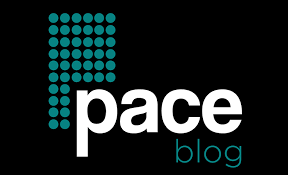Code versioning and record keeping are the two most critical elements that make or break any project in software design. It is an intrinsic task which not only makes development easier but also keeps projects organized, traceable, and maintainable. Herein is a guide on best practices for the same.
Why Version Control?
These are important tools for managing changes to source code across different versions. In other words, they keep track of the changes so that the developer can locate modifications, and even collaborate, and if needed, roll back to earlier versions. Version control systems like Git, Subversion, and Mercurial organize tasks among various persons and maintain a record of changes made in history.

Choosing the Right Version Control System
Choosing the right VCS is just a step toward real version control. A lot of people, for example, choose Git because of its distributed nature. They are not afraid to have many different developers working on the same project at the same time because they know no one is going to overwrite their changes. GitHub, GitLab, and Bitbucket extend this experience with pull requests, issue tracking, and integrations with continuous integration and continuous deployment systems.
Implement Branching Strategies
Importantly, strategies for branching make management of development workflow possible. At this end, what comes in most is the Git Flow model; it involves dedicated branches for features, releases, and hotfixes. In this way, this gives a possibility for independent work on new features or bug fixes without breaking the main codebase. Clearly enunciated branch nomenclature and guidelines will lead to consistency and clarity.
Commit Messages and Frequency
Writing clear and descriptive commit messages is the most important ingredient for an understandable project history. Changes should be committed often but meaningful; avoid large monolithic commits that make it hard to track a certain change or problem. Each commit message alone should be able to answer exactly what that change did, so one can follow up on how the project history evolved.
Best Practices in Documentation
Documentation is a part of the process of software development intrinsically because it informs context, instructs, and explains the code base. The efficient documentation will make onboarding easier and faster for new developers. It also assures the maintenance of the system in the long term.
Documenting Code and Architecture
Good documentation begins with inline comments and detailed explanations within the code itself. This can help other developers get into the logic and purposes of the code. Architectural documentation would hold diagrams and flowcharts that reveal to one the general structure of the system and how its various components interact with one another. There needs to be some sort of high-level overview of how different elements in a system work together.
Keep an Elaborate README
It is an entry point to the understanding of a project, and this is where any information concerning installation, examples of usage, and purpose and functionality of a project should be taken record of. This file is most probably going to be the very first resource that new contributors or users will refer to for guidance; hence, keeping it updated and informative is paramount.
Documenting with Tools
There are tools for documentation like Doxygen, Sphinx, or Javadoc that realize a large portion of the process from source code by automating and standardizing it. Such tools will extract comments with added annotations and then create structured and navigable documentation. This would be very helpful, especially in huge projects.
Version Control for Documentation
Documentation should, like code, be put under version control. Version control systems keep track of changes made to the documentation and let one revert to previous versions if necessary. This would let the documentation change with the codebase, giving rise to consistency between them.
Collaboration with a custom software development company benefits version control and documentation practices. Quite often, such companies have already defined methodologies regarding code and documentation management that will be applicable in your project. They can share experience in the selection of proper versioning tools, the application of correct branching strategies, and ensuring good, maximum coverage documentation. In this way, you will ensure that the development workflow is optimized and the high standards of documentation and version control are maintained.

Regular Reviews
Documentation is a process that needs to be treated as a living document, extendable according to the development of the project. It involves periodic reviewing and updating so that it remains relevant and true. Reviewing by team members points out the gaps—rather, the outdated information—so that all areas of a project are well covered.
Conclusion
The two cornerstones of any successful software development are effective version control and documentation. This means a proper version control system is set up with clear strategies in place for branching and careful committing, accompanied by comprehensive documentation that enables smoother collaboration and ensures the quality of the code and maintenance of a project in the long run. Only then will embracing these practices assure one of more productivity but also a better, more organized way to conduct development.

